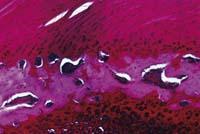Bloody experiments

Where is the blood going? The question is not easy to answer. At present it seems like: of course, the heart pumps and complements a journey through the body to return to the heart; once this journey is completed, it makes a smaller journey to the lungs and again from that second journey to the heart. It is the same blood that returns to the heart without ceasing. Cross your heart and travel again. It is the journey of traffic.
Now we know how blood circulation is, but it was not easy to find it. Man did not know the XVI. Until the 19th century, English William Harvey conducted bloody studies with live animals. Harvey had to fight prejudice. And the most effective weapon for this struggle was observation, in this case blood observation.
A children's story tells that for an emperor they made a special costume. Actually there was no clothes, the emperor was naked. And they all saw the emperor's body, but no one dared to recognize it because it was supposedly a fine thread suit. Moreover, the emperor believed he had a special suit and the subjects also believed. Until a child speaks, the boy said aloud what everyone saw, that the emperor was naked. And hearing the child's words, they all realized it was true.
Harvey's story was similar. Instead of an emperor, this story had the great doctor Galen. In the place of an invisible costume, the journey of blood and in the place of the child, Harvey himself. Galen claimed that two types of blood (red and purple) produced hearts and livers, respectively, that were destined to arteries and veins and that disappeared in the extremities for some type of consumption. Galenok dixit. And if he said it, it had to be true.
But Harvey did not see it when he opened the bodies of the animals. He saw another reality. Researchers of the time also saw that veins and arteries are not simple tubes. They have valves, which makes them one-way vials. Blood never recedes. In the arteries this pathway is diverted from the heart and in the veins is reversed. Moreover, analyzing numerically it was very difficult to accept the Galen hypothesis. Harvey calculated that the body should produce about 250 liters of blood per hour.
Something did not work in Galen's hypothesis. With our current knowledge it is evident what does not work. And the analysis of meaning leads us to the idea of traffic. But this hypothesis would be a great change in the XVI. In the 20th century, Harvey had to be very safe. He had to confirm with bloody experiments. He opened many animals, still alive, trying to catch the traffic working. He saw the heart working and followed the path of blood and understood the circulation.
Pavlov
Far away was the XVI. In the 20th century, as Galileo looked into space, Harvey opened living animals. However, centuries later, similar and bloody experiments were conducted to conduct similar basic research. XIX. At the end of the 20th century the question was not where the blood goes, but whether hormones travel from the blood. That is also evident to those who know a little physiology; hormones are the messengers who travel in blood.
Russian Ivan Pavlov answered this question and won, among others, the Nobel Prize in Physiology in 1904. Pavlov is known for researching the conditioned response. To do this he worked with the food of the dogs, which when detecting an indication of food or food, segregated acids to digest the food. And one of the questions Pavlove answered was how the sign of presence of the food reached the stomach.
The chemical response of the stomach began immediately after introducing food into the mouth. At first Pavlove thought that the mouth and stomach communicated through the nervous system. To confirm this, he cut off a dog's nervous system and put a meal in his mouth. The signal reached exactly the same as the stomach. It was not the way of the nervous system signal. Another option was the digestive tract itself. And to confirm or rule out this hypothesis, he cut off another dog the junction between the esophagus and the stomach (when the animal was alive, of course). He put food in his mouth, although the signal came exactly like the stomach. Pavlove acknowledged that the only way the signal had (hormones) was blood. What today becomes "evident".
Pavlov experimented with live dogs in a series of bloody experiments. In addition to Pavlove and Harvey, many other scientists have conducted bloody experiments. They are just two examples; yes, the cases mentioned are experiments that have provided us with fundamental knowledge.





